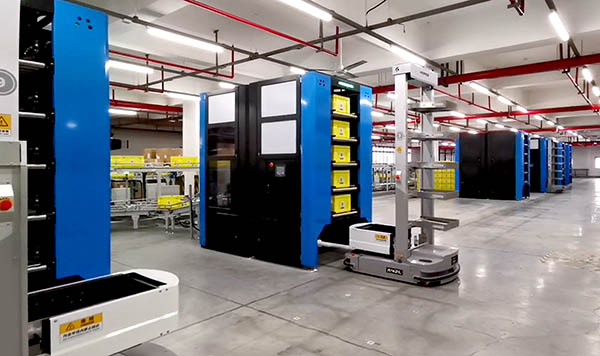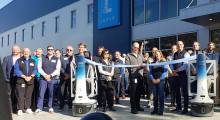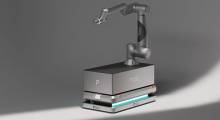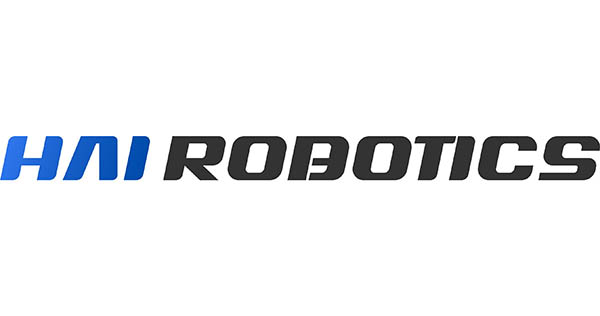HAI Robotics yesterday announced that more than 100 units of its HAIPORT-powered Workstation have been put into operation globally since it launched the product a year ago. The Shenzhen, China-based company said the system has significantly improved order-fulfillment efficiency for its customers, which have been under pressure to update their warehouses with higher throughput capacity.
“HAIPORT-powered Workstation offers an innovative solution for warehousing automation and provides a new way of human-machine interaction,” said Jeff Zheng, research and development director at HAI Robotics. “It helps not only to increase operational efficiency, but also to reduce costs and deliver better ROI [return on investment]. We’re committed to delivering more value to our customers and making their investments worthwhile.”
Founded in 2016, HAI Robotics has developed automation including its Autonomous Case-handling Robot (ACR) for factories and warehouses. The company has subsidiaries in Hong Kong SAR, Japan, Singapore, the U.S., and the Netherlands. It has more than 600 global patents for core intellectual properties involving positioning, robot control, and warehouse management.
HAI Robotics raised a total of more than $200 million in its Series C and D rounds this year, and it recently won the robotics category in the 2021 NextGen Supply Chain Solution Provider Awards.
HAI Robotics builds HAIPORT to increase throughput
HAIPORT is an automatic loading and unloading machine that can be docked with HAI ROBOTICS’ ACRs and conveyor workstations. At a HAIPORT-powered Workstation, multiple loads of totes or cartons are unloaded from the HAIPICK robots at the HAIPORT loader.
They are then transferred onto conveyor belts for sorting per system orders and moved to the HAIPORT unloader, where they were fetched by robots for the next round of order processing.
The collaboration between the HAIPICK robots, HAIPORT, and the conveyor allows one-stop case handling from inbound to outbound orders, said HAI Robotics.
With case loading and unloading being processed simultaneously at the two sides of a HAIPORT, a single workstation can handle up to 900 cases per hour, far exceeding that of manual handling. That speed is 16 times faster than the robot-to-conveyor belt transport, the company said.
The system promises higher case-handling capacity, with four to eight cases being loaded in 3 seconds and unloaded in 5 seconds. A single robot’s efficiency can be improved by 30% compared with manual loading/unloading, according to HAI Robotics.
HAIPORT-powered Workstation can triple picking efficiency
Designed for direct interaction between HAIPICK robots and conveyor belts, HAI said its HAIPORT-powered Workstation can increase loading and unloading speeds with less human intervention, increasing manual picking efficiency up to three times. The use of the workstation can free warehouse staffers from tedious manual labor so that they can focus on more important tasks, it added.
Armed with HAI Robotics' software as well as the multi-sensor technology that can monitor a robot’s movement, the workstation can accurately judge if a particular case of goods should be delivered to a workstation or not.
The company added that the workstation's modular design provides scalability and flexibility when automating a warehouse. It can be customized and adapted for different uses based on the customer’s requirements. As a result, 30% fewer robots are required if a HAIPORT-powered Workstation is deployed in a warehouse, said HAI Robotics.
The HAIPORT-powered workstation recently received CE and ETL certification, demonstrating compliance with European and U.S. safety standards, respectively. HAI Robotics said the certifications also show that it has been implementing stringent quality controls for its products along its own supply chain, from product design to production.
Thanks to its flexibility, HAIPORT-powered Workstation is suitable for extensive storage scenarios in which small and midsized cases are used, said HAI Robotics. These include raw materials, small electronics, apparel, medicine, retail, and third-party logistics (3PL) operations that have large number of SKUs and demand high order-fulfillment efficiency in peak hours because of surging e-commerce demands.
Article topics
Email Sign Up

















